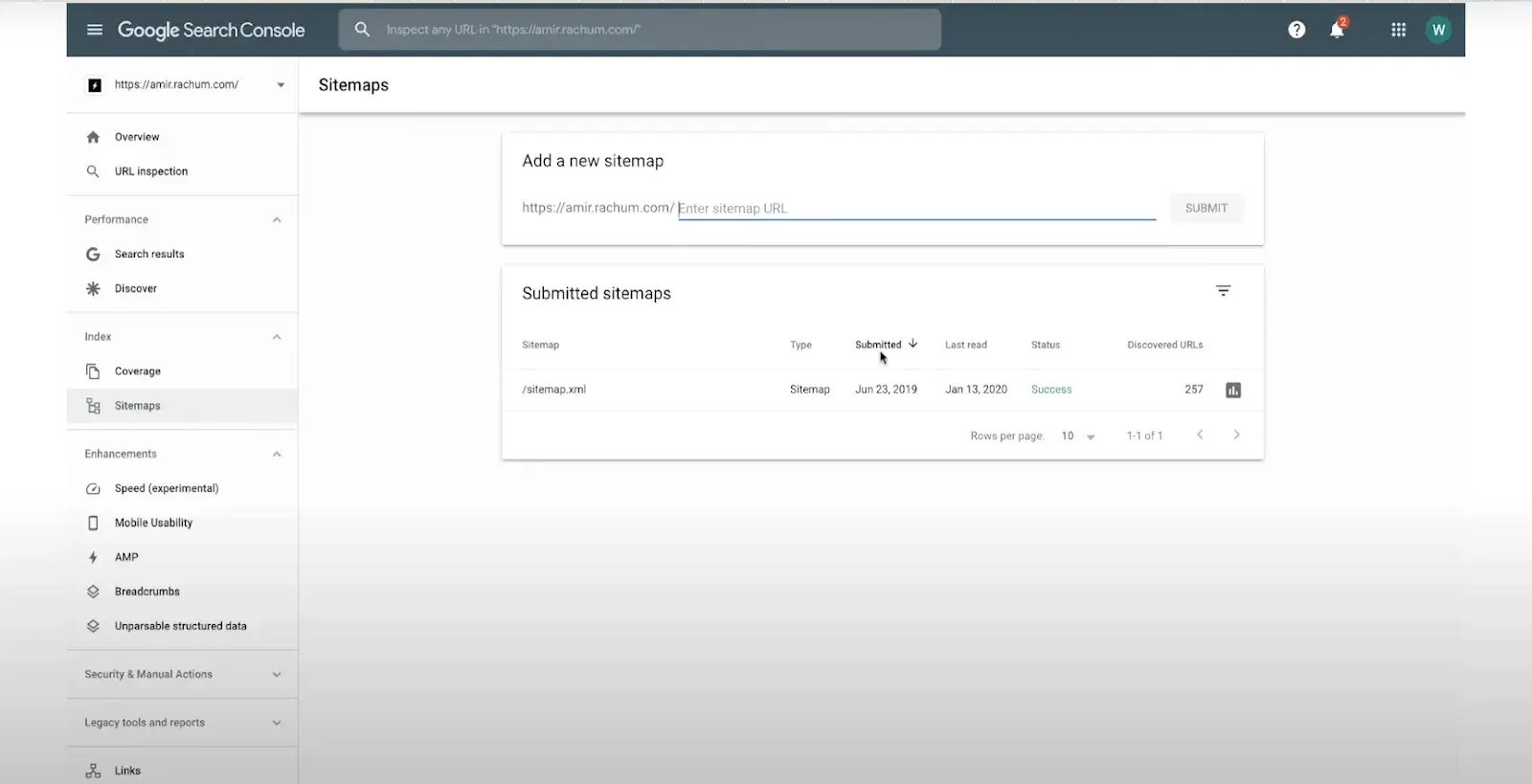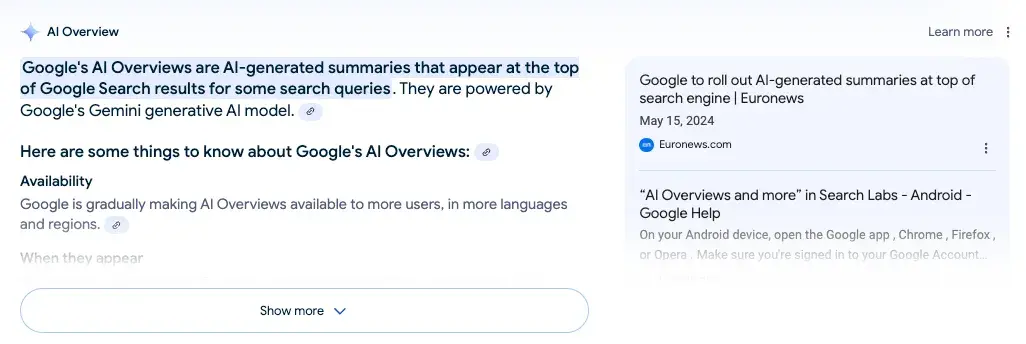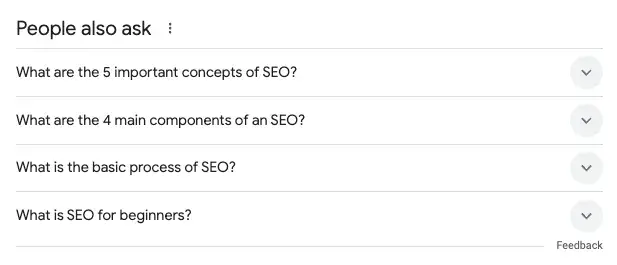When I first became a writer, I was completely overwhelmed with the idea of SEO. It seemed like a foreign language — and not one I had a clue how to speak! But it didn’t take long to understand the basics of great SEO.
To kick off your own SEO program, I’ve collected 12 foundational steps for positioning your site as a leader to the search algorithm. Whether you’re a writer, founder, or website manager, you can leverage these steps to help get noticed on Google.
There are over 500 billion web pages in Google’s index, so it’s fair to say the search environment is pretty saturated. Between my own experience as a writer and talking to SEO experts, I’ve discovered 12 key steps to make sure your content rises to the top.
Step 1: Submit a sitemap.

One key component of technical SEO is crawlability — how easy it is for Google’s “crawlers” to navigate and take stock of your site. One quick way to make sure Google can navigate your site is by submitting a sitemap, which lays out the way users can get from page to page. It sounds difficult, but a sitemap is essentially a layout of your website and how each page connects to the others. Google makes it easy to submit on Search Console.
Pro tip: Ane Wiese, SEO lead at Saas.group, shares, “When you’re trying to rank on Google, it’s important to cover the basics first. Ensure that you have set up your xml sitemap and robots.txt file with the appropriate allow and disallow rules.”
Step 2: Make sure you’re optimized for local searches.
If you run a brick-and-mortar store, or offer some form of local services, it’s important to optimize for local searching. And thankfully, it’s not too difficult. SEO Specialist Joshua Agaba walked me through the basics of local optimization:
“If your business has a physical store and serves a specific geographic area, you want to emphasize local SEO. Start by creating a Google Business Profile to show up on local searches when users search for products/services closest to them. Primarily, your GBP will contain your NAP information (name, address, and phone number) to help users access and find you easily.”
Step 3: Stay AI-friendly.

The search algorithm is always changing, but this year, there was a big update: Google’s AI Overviews entered the scene. We’re looking at a new age of searching that goes beyond typical algorithms and instead leverages AI, too.
Highly structured content is a key way to ensure your content is picked up by the AI bots, but you also need a strong site reputation. As you regularly integrate SEO best practices into your website, and as users engage with your content, your reputation will grow organically.
Pro tip: “It’s not enough to be keyword-friendly; your content must also be AI-friendly. Effectively using H1/H2/H3 tags and FAQs helps AI to quickly extract key points. Building backlinks boosts both your SEO and AI authority — and don’t forget to include internal links on your keywords!” advises Sarah Frazier, head of content marketing at Grip Security.
Step 4: Ensure your website works well on mobile.
Mobile optimization is more important than ever, as approximately half of all web traffic comes from a mobile device. People are using their phones to read, engage, research, and purchase — so your website needs to show up well. You can take advantage of a mobile friendliness test to ensure your site appears well on mobile screens.
Step 5: Include meta tags.
Meta tags are an HTML element that includes a title and description. They help crawlers understand your site's content better and help users make sure they’re clicking the right website. In my experience, a clear and well-thought-out meta tag can be a major differentiator for website engagement and SERP rank.
Best practices for meta descriptions include:
- Using full sentences that accurately describe the content.
- Keeping the length between 150-160 characters.
- Including relevant search terms and keywords.
Agaba explains meta tags as labels that “help Google understand your page and its relevance to specific search queries.”
Step 6: Leverage search terms.

When people think of SEO, their minds often jump straight to keyword research. Keyword research isn’t the entirety of SEO — but it is important.
When I’m tackling keywords for blogs that I’m writing, there are a few ways I like to go about it. Sometimes, editors or SEO specialists provide keyword research that’s been done using a program like Semrush. But you can also tackle keyword research by using the Google search engine itself.
Pro tip: Search your primary question in Google’s search engine and then scroll down to the “People Also Ask” box. These won’t only serve as inspiration, but insights into what people are searching related to your topic. This is a great option for bloggers who don’t have resources to fund keyword tools yet and, if I haven’t received formal keyword research, this is the trick I employ.
Step 7: Keep your pages scannable.
Scannability serves a couple of key purposes. Like all SEO strategies, it makes it easier for Google bots to navigate. But the reason Google crawlers work that way is because humans work that way, too.
This is something Hillary Walters, a B2B SaaS content marketer, is a major proponent of.
“My recommendation is always to make your content super scannable,” she says. “Even if you're describing complex topics, your posts should be well-organized and easy to read. Use clear headers (that capture keywords), and incorporate simple sentences.
“When you have large blocks of text, break them up! This strategy helps search engines like Google scan your work. It also increases the odds that readers will actually scroll through the entire post.”
Step 8: Refresh past content.
Another great way to keep content cycling in Google’s algorithm is through refreshing. The purpose of refreshing is to include the best, most relevant links, data, and content for a post at any time. Plus, algorithms change, and refreshing past content allows you to make sure you’re keeping in line with SEO best practices.
Generally, it’s recommended to refresh past content once it’s between 3-12 months old. Of course, this will depend on the type of content you're publishing, as well as your team’s bandwidth.
Pro tip: “A great benefit of refreshing content is that you can add relevant calls-to-action,” says Em Thomas, a B2B copywriter. “Maybe you’re pushing a new product or service, or perhaps you have an event coming up — you can add those CTAs to drive users reading older blog content to your new initiative.”
Step 9: Link, link, link.
Linking is an extremely important part of SEO. It builds your site’s reputation and, when internally linking, it also helps crawlers clarify your site’s navigation. There are two types of on-site linking:
- Internal linking, which links your website pages to one another. This drives users to stay on pages within your site and also pushes them down the sales funnel toward conversion (if used strategically).
- External linking, which links pages to other sites. When externally linking, you want to make sure you’re leveraging reputable sources and non-competitors — you don’t want to drive a reader away!
Pro tip: Frazier advises, “Remember to incorporate links to related sources and higher-value (i.e., gated) content assets. You’ll also want to add compelling CTAs in your ranking content — after all, your ultimate SEO goal is to establish authority, build trust, and encourage deeper engagement with your brand.”
Step 10: Make sure your content delivers.
An easily overlooked aspect of SEO — especially in the age of AI-written blogs — is high-quality, relevant content. You want to make sure that your articles are written to actually answer the questions users are searching for in an informative way. No one wants to dig through generic information.
As Google’s algorithm has changed to prioritize Experience, Expertise, Authoritativeness, and Trustworthiness (EEAT) in content, you’ll want to consider including:
- First-person voice.
- Expert tips that aren’t featured in other blogs.
- Clear headers that resonate with questions readers are having.
Step 11: Prioritize quality backlinks.
Off-site SEO is optimization that happens outside of your website. A key element of off-site SEO is backlinking. Backlinks are links from other sites back to your site, and you can gain them organically and through intentional, backlink-building practices like networking or tracking Google alerts for unlinked references. However you’re acquiring backlinks, you just want to make sure that you’re being referenced on high-quality sites.
Step 12: Build reputation across platforms.
Another part of off-site SEO is building reputation across platforms. Establishing a presence and a good reputation on other platforms like social media serves your overall SEO. Users who trust and recognize your brand are far more likely to interact with your content.

While there’s no way to guarantee you’ll take the top spot on Google, learning SEO is a great place to start. For folks looking to dive further into SEO, take a look at HubSpot’s resource for launching an SEO program: the Complete SEO Starter Pack. This starter pack includes an ebook on increasing your traffic, an ebook about myths to leave behind about SEO, a search insights report template, and an on-page SEO template for Excel.
Final Thoughts
In my experience, learning the basics of SEO can be pretty intimidating. But once you’re familiar with how it works — and you realize that most of what pleases the algorithm is also what speaks to your users — it gets a lot easier to leverage.
Long-story short? SEO doesn’t have to be hard.
Technical SEO


.png)


![9 HTML SEO Tags That Impact Your Ranking [Cindy Krum's Tips]](https://53.fs1.hubspotusercontent-na1.net/hubfs/53/html-seo-1-20241119-1659249.webp)


